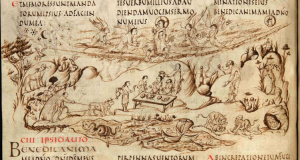The systematic study of the early medieval parchments preserved in Lucca Diocesan Historical Archive has allowed the reconstruction of an overall image of land set-ups and power structures in the valleys of the Cornia and Pecora rivers between the 8th and 10th centuries. A fair number of charters produced and/or preserved by the Lucchese bishopric concern, in fact, plots of land located in these areas that were the object of donation, sale, lease.
First of all, the charters highlight some structural factors. The local society was characterized by the absence of a real aristocratic framework. To hold medium and large estates in the region were those who gravitated around the great public courts: Lucca and Chiusi in the Lombard age; Lucca from the Carolingian age. Overwhelming was the presence of public fisc, perceptible also by charters that come almost exclusively from the bishop.
The charters also allow to reconstruct a diachronic path and to follow in the region the processes of political and socio-economic transformation: in particular the phenomenon called ‘caging of the peasantry’ (Fig.1). The means of extraction and circulation of resources became more effective. The increasing availability of resources proceeded with the growing hierarchization and aristocratization of society. All this happened in symbiosis, not in contrast with public authority.
The re-examination of the early medieval parchments has led, finally, to a reasoned review of the Lucca bishop’s patrimony in these areas, highlighting the centrality and relevance of four fiscal areas, two for each valley, from which the curtes that transited in the bishop’s hand were “enucleated”. The next step in the research will be to conduct a systematic investigation of the parchments of the 11th and 12th centuries, partly preserved in Lucca, but increasingly in Siena State Archive.



